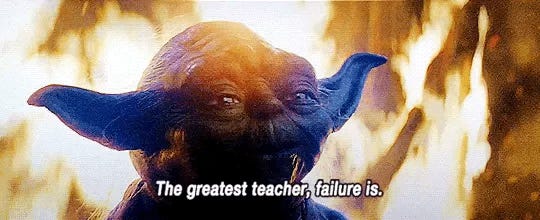In 2021, I composed a short video essay called “Designed to Fail: How Video Games Made me a Better Writer”. In that piece, I made some connections (made long before I made them by the likes of James Paul Gee and others) between video games, education and learning how to write. The original version of “Designed to Fail” was a web-essay I created around 2015. Both versions work under the same basic premise: failure is an excellent teacher.
In video games like Super Mario Bros., the recently named Game of the Year 2024 Astro Bot, 2023’s Game of the Year Baulder’s Gate 3, and so many others, players learn through trial and error, through failing. Video games teach you how to play, how to win, how to progress, how to avoid demise, and how to maximize triumph by teaching you about failing. But HOW do they do this? Under all the graphics and mechanics and loot and art design and sound design; video games are failure simulators; intricately designed feedback loops that provide instantaneous feedback to the player and then allow the player to try again. The concept of flow comes into play here also as game designers are always trying to find this optimal state of challenge versus fun; attempting to maximize the increasing obstacles posed by the game (not making it too hard, but just hard enough to keep you going) while simultaneously making the playing of the game always feel fun. Flow is incredibly difficult to balance in video games and only masters of the craft are able to find it; sometimes by accident. Educators seek flow states all the time too; active learning, hands on experiences, self-paced learning, scaffolded course design, ungrading….the list goes on. All of these educational practices are designed to create classroom experiences for students that don’t tip the scales too far in one direction or another: too difficult or too easy, too rigorous or too innocuous, too fun or too irrelevant.
When I was composing “Designed to Fail”, AI was still far off. Algorithms and Machine Learning were in the zeitgeist and we were looking toward a future of curated content. The release of OpenAI’s ChatGPT in November of 2022 was not here yet. In “Designed to Fail”, I imagined a writing classroom that might work like a video game; like a level from Super Mario Bros. What would it look like if a writing student could get instantaneous feedback on their writing, whenever they wanted? Sort of like when you hit that first Goomba on level 1 of Super Mario Bros. and realize; ‘uh oh, that thing will kill me if I touch it. Got it, lesson learned. Don’t do that again.”
As the challenges grow within the game, the feedback becomes more and more needed. Avoid the spinning fire wheels. Use the warp pipe. Those turtles throw hammers. Writing works like this too. I need more clarity of voice here. Multimodal elements might engage my readers more effectively here. More context is needed here, perhaps something that speaks to my local community. My authentic voice might be needed here instead of this generic sentence.
What if there existed a system that could provide writers with real time, instantaneous feedback, on the fly, like video games did for players? What if writing could work like a failing simulator? And what if writers could become more like expert players, learning to use that system collaboratively to make themselves better and better at the game the more they played it?
Enter Artificial Intelligence; a system designed to do just this. A system that, if used collaborative and in tandem with experts (writing studies teachers, interdisciplinary educators, and over time, writers themselves) and students working with these platforms in ethical and responsible ways, might just provide the in-the-moment, real time feedback needed to learn, adapt and grow. In a model like this, students themselves become the assessors of their own work. The onus of evaluation shifts away (some) from stage sages and moves into the hands of students, working in collaboration with their teachers and in collaboration with AI tools (used in the right ways). I know this sounds firmament-shifting. It is. AI could be something game changing. I know how AI systems work and I understand they are predictive models intended to provide statistical probability outputs based on questionable training data representative of certain models of language. I also know that there is potential for these systems to be shaped and molded by expert AI collaborators in ways that might be extremely powerful for new and emerging writers; writers who are on level 1 of Super Mario Bros. and who need some failing to help them learn how things work. This is not an either/or model. We don’t need to think about this as ‘AI will replace teachers’; in face, the opposite is true if AI is embraced as inspiration instead of rival. If we look at AI as a tool that can embolden educators to think in new ways about how to teach, what to teach, how to assess, who is doing the assessment and what learning actually is, what it looks like and how it works, these tools could become powerful agents to help students and learners enter into flow states very similar to the ones brought on by the best video games out there; teaching while learning and learning while teaching all while having fun at the same time.
So how about it; is it time to level up?






This is excellent. AI is so practical as a collaborator and it provides the learn by failing option for writers. Alas, the educator (who wants to rid him or herself from the evaluative process) can seamlessly walk away while the student is engaged in a most productive process. I am in total agreement with your perspective.